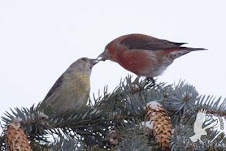The participant’s “Guide for Atllasser’s” is now available off the atlas website (www.birdatlas.mb.ca) , either from the home page or through Resources >> Atlasser Material >> Guide and Data Forms. This has a few minor tweaks from the one we handed out at FortWhyte (which we had run out of by the end of Saturday) but if you have a copy of that one you can still use it (the content hasn’t changed – just, with your input, we made a few minor editing changes)
The Data forms are also available in the same place. The breeding evidence forms print best on legal paper (14”x8.5”) so if you have difficulty printing on this paper type from home just let us know and we can do it for you. You could of course print these on 11 x 8.5 ( al little squashed but legible) for use in the field and then copy them over to a master copy kept at home and with everything printed very neatly. I recommend people keep one master copy per square they are atlassing in and then use this/these master copy/copies for data entry later. The forms we gave out at FortWhyte, which the watermark “DRAFT” plastered across them, can be used as rough field sheets but please don’t use them as master copies if you are going to send us in datasheets to be scanned.
The Guide For Point Counters will be up shortly. The point count forms are already available and print on letter-sized paper (11”x8.5”). We will soon have the remaining items in the “Atlasser’s Kit” such as the square maps and summary square sheets ready too for download. If you checked the “Yes, please send me the atlasser’s kit” when you registered we will have those in the mail within a week or two.
Casual forms and rare/colonial species forms and nest record cards are all available on the website too. Would be awesome to start the atlas with a rare bird!!
Saturday, April 17, 2010
Wednesday, April 7, 2010
White-breasted Nuthatch
Nella Schmidt submitted the following photo:

Nella writes:
April 7.... Nest-building Whitebreasted Nuthatches...The male (I'm assuming) had some nesting material in his beak and as as he ascended, descended and circled the trunk, he shook his head continuously back and forth. The female ( presumed) watched him. Eventually he placed the material which I couldn't identify into the cavity. On my way home, when I stopped by shortly, the male had a white fluffy seed head in his beak, and again engaged in the same head movements while the female was occupied with arranging the nesting material in the cavity.
Subscribe to:
Posts (Atom)



